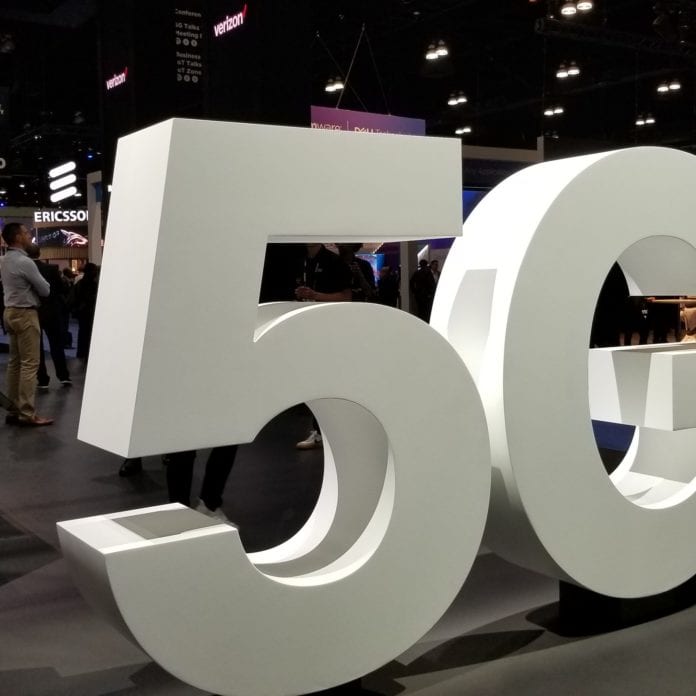Previous generations of cellular technology have focused on establishing macro-site-based, outdoor coverage as quickly as possible and then increased capacity later, based on traffic demand. But in 5G, the customers and applications using 5G may end up having a significant influence on when and how the technology is deployed, according to Sanyogita Shamsunder, VP for Verizon’s 5G/digital ecosystem and innovation.
In an interview at Mobile World Congress Los Angeles, Shamsunder outlined Verizon’s three-pronged approach to its 5G deployment preparations and said that the carrier has been in a fiber build-out push at a breakneck pace of 1,500 miles of fiber deployed per month as it densifies its network for both 4G and 5G.
“I think we should not think about 5G coverage the same way as we do for 3G and 4G,” she said, “I think the needs of the customers, as well as the needs of the applications that you’ll be running could require bandwidth, but you could probably be downloading rather fast on 5G and continue to have a good experience while you are on 4G.”
Part of the reason to have to think differently about 5G coverage also is shaped by the limitations of millimeter-wave frequencies which Verizon is using for its deployments.
“We believe that to be able to to deliver what 5G is capable of, that a large amount of bandwidth is necessary, and that’s only possible at millimeter wave right now in this country,” she said.
And, Shamsunder noted, the carrier also has an existing LTE network with strong performance to underpin its 5G ambitions. That network, she said, not only has the performance to back up 5G, but the necessary density as well, in many cases.
She cited a Qualcomm research piece which found that in some markets, deploying 5G on existing 4G infrastructure would result in 90% coverage. “We’ve seen that in the field. We’re not just depending on simulations, we do see that,” she said.
MmWave spectrum, she added, “is not without its challenges” and there are some things that simply have to be worked around: the laws of physics and high-loss building materials such as low-emissivity glass, for instance. But she added that Verizon has found that in some instances, line-of-sight isn’t the only way to achieve mmwave coverage due to multi-path propagation and reflections. However, it is challenging to build deployment rules around when multi-path will work and when it won’t for any given location, Shamsunder said, and the test and measurement tools to determine what those rules should be aren’t always available to the same extent that LTE options are, because the commercial wireless industry hasn’t operated in the bands before. Better mapping information and classifications of buildings and their materials would help with 5G deployment, she added.
Asked about the overall progress of 5G, Shamsunder said, “Millimeter wave is just starting, and we absolutely believe that there is just upward progress from here of more solutions: more [dynamic spectrum sharing], more spectrum, standalone 5G — that offer more capabilities. But standalone will come shortly.”
She noted three aspects of Verizon’s work: fiber build-out, virtualization and upgrading to advanced electronics in the radio access network. Verizon has been working on virtualizing its network for a number of years now, and that work will help the carrier when it moves to stand up a 5G core.
In terms of potential pain points in 5G deployment, Shamsunder said that ensuring the ability to deploy flexibility with a virtualized RAN will be a challenge in 5G, to avoid bottlenecks like the backhaul issues that came in the scaling-up of LTE and so that capacity can be shifted and managed as needed. Backhaul and fiber will continue to be important, and she said that there is more teamwork now between Verizon’s different organizations with both the wireline and wireless network teams coordinating on 5G build-out planning.
Talent will be another challenge in the scale-up of 5G, Shamsunder added.
“You are talking about a different way of operation,” she said, compared to the days of purpose-built boxes and the tools that came with them. Visibility and monitoring will also be a challenge, and automation will be a necessary element to handle the complexity of 5G network management. “As we’ve build different networks, they came with their tools, and there is now an opportunity to look at something different and something that is pulled together better,” she said. “We have talent that has, over the years, created a lot of a knowledge base in terms of how to run and optimize and build and serve performance.” Now, she said, artificial intelligence and machine learning offer the potential for “taking all of that knowledge and building the right tools, so you can make the engineers worry less about the mundane stuff and look more at the higher-level issues.” The self-organizing network concept in 4G did help in offloading some mundane tasks such as highly manual decisions on which cells should be on neighbor-lists, Shamsunder said, but it wasn’t comprehensive.
“It made it a little bit more automated, but there’s a lot more opportunity,” she said.
Overall, though, Shamsunder said that she is “amazed at how quickly we have ramped up in this version of a G.” 5G tech has moved quickly into a smartphone form factor due to the scale of the smartphone market, she noted, but she sees that opening up for new platforms and more innovation as the technology progresses.

